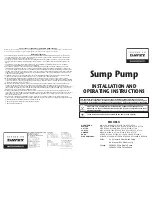
Page 80
EPS Stromversorgung GmbH
Alter Postweg 101 • 86159 Augsburg
Germany
Fon: +49 821 / 570451-0
Fax: +49 821 / 570451-25
www.eps-germany.de
PSI 9000 2U Series
3.11
Other applications
3.11.1 Parallel operation in master-slave mode (MS)
Multiple devices of same kind and model can be connected in parallel in order to create a system with higher total
current and hence higher power. For master-slave operation, the units are usually connected with their DC outputs,
their Share bus and their digital master-slave bus.
The master-slave bus is a digital bus which makes the system work as one big unit regarding adjusted values,
actual values and status.
The Share bus is intended to balance the units dynamically in their output voltage, especially if the master unit
runs a function like sine wave etc. In order for this bus to work correctly, at least the DC minus poles of all units
have to be connected, because DC minus is the reference for the Share bus.
3.11.1.1 Restrictions
Compared to normal operation of a single device, master-slave operation has some
restrictions
:
•
The MS system reacts differently to alarm situations (see below in
•
Using the Share bus makes the system reacts as dynamically as possible, but it is still not as dynamic as single
unit operation
3.11.1.2 Wiring the DC outputs
The DC output of every unit in the parallel operation is simply connected to the next unit using cables with cross
section according to the maximum current and with short as possible length.
3.11.1.3 Wiring the Share bus
The Share bus is wired from unit to unit with an ideally twisted pair of cables with non-critical cross section. We
recommend to use 0.5 mm² to 1.0 mm².
• The Share bus is poled. Take care for correct polarity of the wiring!
• In order for the Share bus to work correctly it requires at least to connect all DC minus
outputs of the devices
A max. of 16 units can be connected via Share bus.
3.11.1.4 Wiring and set-up of the master-slave bus
The master-slave connectors are built-in and can be connected via network cables (≥CAT3, patch cable). After
this, MS can be configured manually (recommended) or by remote control. The following applies:
•
A maximum of 16 units can be connected via the bus: 1 master and up to 15 slaves
•
Only devices of same kind, i.e. power supply to power supply, and of the same model, such as PSI 9080-60 2U
to PSI 9080-60 2U
•
Units at the end of the bus must be terminated (see below)
The master-slave bus must not be wired using crossover cables!
Later operation of the MS system implies:
•
The master unit displays, or makes available to be read by the remote controller, the sum of the actual values
of all the units
•
The ranges for setting the values, adjustment limits, protections (OVP etc.) and user events (UVD etc.) of the
master are adapted to the total number of units. Thus, if e.g. 5 units, each with a power of 1.5 kW, are connected
together to a 7.5 kW system, then the master can be set in the range 0...7.5 kW.
•
Slaves cannot be controlled manually as long as they’re in remote control by the master
•
In case the function generator of the master unit is going to be used, the Share bus must be connected as well












































